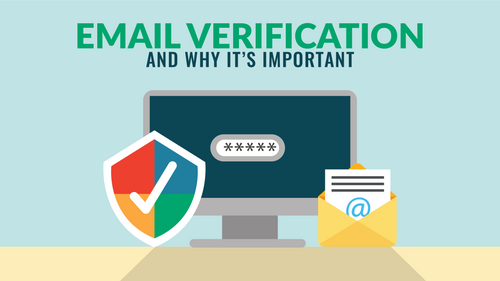In today's digital landscape, email verification is a crucial step in user onboarding, security, and communication. Yet, it's often overlooked when it comes to design. An exceptional email verification design not only enhances user experience but also reinforces trust and brand identity. As an expert in the field, I'm here to guide you through the world of email verification design. Whether you're a UX/UI designer, a developer, or anyone interested in creating a seamless and visually appealing email verification process, this comprehensive guide will equip you with the knowledge and strategies to craft remarkable designs.
Why Email Verification Design Matters
Before we delve into the specifics of email verification design, let's understand its significance:
User Trust: A well-designed verification process reassures users that they are interacting with a legitimate and trustworthy platform.
User Experience: A user-friendly and visually appealing design simplifies the verification process, reducing user frustration and drop-offs.
Branding: Email verification provides an opportunity to reinforce your brand identity through design elements, colors, and messaging.
Elements of Exceptional Email Verification Design
Clear Call-to-Action (CTA): Your verification email should have a prominent and visually appealing CTA button that clearly indicates what action the user needs to take.
Branding Consistency: Ensure that the email's design is consistent with your brand, including colors, typography, and logo placement.
Concise Messaging: Keep verification emails short and to the point. Communicate the purpose of the email clearly and provide instructions concisely.
Mobile Responsiveness: Design with mobile users in mind, ensuring that the email and verification process are seamless on all devices.
Visual Hierarchy: Use design elements to guide users' attention to the most important information, such as the verification link or code.
Innovative Email Verification Design Techniques
Interactive Emails: Implement interactive elements like buttons that change color on hover or show a loading animation when the user clicks.
Personalization: Personalize the email by addressing the user by name and tailoring the message to their specific action.
Progress Indicators: If the verification process involves multiple steps, use progress indicators to inform users of their current position in the process.
Creative Illustrations: Incorporate custom illustrations or icons that align with your brand's identity and add visual interest to the email.
Feedback Animation: Use subtle animations or transitions to provide feedback when users click the verification link or button.
Common Pitfalls to Avoid
Overwhelming Design: Avoid cluttered designs with excessive images or text that can confuse users.
Inadequate Testing: Always test your email verification designs on various email clients and devices to ensure they display correctly.
Ambiguous Instructions: Ensure that your email's instructions are crystal clear, leaving no room for user confusion.
Ignoring Accessibility: Make your verification emails accessible to users with disabilities by following accessibility guidelines.
Forgetting Mobile Users: Given the rise of mobile users, it's critical to prioritize responsive design.
Email Verification Design Best Practices
A/B Testing: Experiment with different designs and content to determine what resonates best with your audience.
Optimize Load Times: Keep email file sizes small to ensure quick loading, especially for users with slow internet connections.
Secure Design: Consider security aspects like preventing phishing attacks by not including sensitive information in emails.
Feedback Mechanism: Provide a way for users to contact support or report issues if they face problems with the verification process.
Privacy Considerations: Respect user privacy and adhere to data protection regulations when collecting and processing email addresses.
Common Questions About Email Verification Design
Q1: How can I ensure my email verification design is mobile-friendly?
Prioritize responsive design and test your emails on various mobile devices and email clients.
Q2: Are there design tools specifically for email verification?
While there are email marketing and design tools, the design itself is often created using standard graphic design tools like Adobe Photoshop or Sketch.
Q3: What's the balance between security and design in email verification?
Security should never be compromised. Ensure that your design doesn't include sensitive information that could be exploited in phishing attacks.
Q4: How can I track user engagement with email verification emails?
Utilize email tracking and analytics tools to monitor open rates, click-through rates, and other engagement metrics.
Q5: Can I use email verification design to reinforce my brand identity?
Absolutely. Consistent use of brand colors, fonts, and logo placement can strengthen brand recognition.
In conclusion, exceptional email verification design is an art that combines user experience, branding, and functionality. By implementing the best practices and innovative techniques outlined in this guide, you can create a seamless and visually appealing email verification process that not only enhances user trust but also reinforces your brand's identity. Remember to prioritize mobile responsiveness, accessibility, and security while continually testing and optimizing your designs for the best results.



